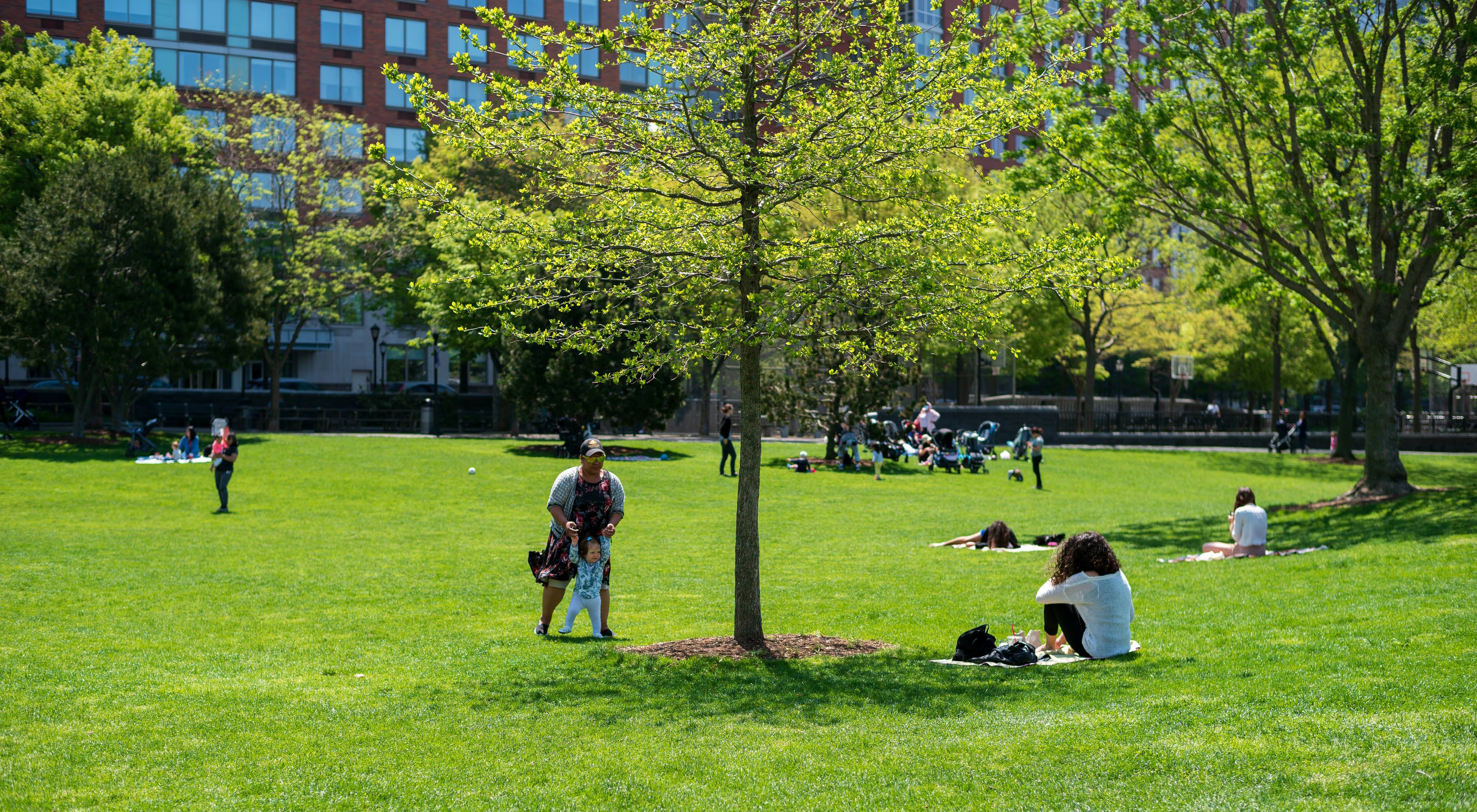Originally published by OffMetro.
Protecting nature isn’t an easy assignment, especially in the midst of the growing specter of climate change. offMetro sat down with Michael Treglia, Urban Spatial Planner, to learn more about sustainability efforts and access to nature in NYC.
How are we New Yorkers doing in terms of our carbon footprint?
New Yorkers are generally well-informed and savvy when it comes to our decisions about our environmental impact. Recent public opinion research commissioned by The Nature Conservancy shows most New Yorkers believe climate change is a serious problem and want to take action.
New York City generally does well in terms maintaining a low carbon footprint for a few reasons. For example, many New York City residents live in apartments – shared walls reduce energy required for heating and cooling, as less is lost through outside walls and windows. Similarly, city dwellers tend to rely on public transportation or walk to their destinations, which is much more efficient than driving everywhere.
How can we improve?
Though New York performs well in terms our carbon footprint, we can always improve. People can opt to: take public transportation, bike, carpool, or drive a fuel-efficient vehicle; eat a “low carbon” diet of mostly vegetables; be mindful of your purchases (the environmental impacts of fast fashion have been in the news lately); and try to generate less waste or explore composting.
You use geospatial data to map green spaces in NYC. What are the goals of green spaces in urban areas?
Green spaces of various types provide numerous benefits in cities, both to people and ecosystems. For example, designated parks provide people with places to get outside, enjoy nature, and exercise, even if it’s just a short walk. Green spaces can also retain rainwater, easing the burden on municipal storm sewer systems. Vegetation also reflects heat from the sun, reducing a phenomenon known as the Urban Heat Island effect (in which cities are generally warmer than surrounding, less-developed areas). Vegetation and associated permeable surfaces (such as soil) also help dissipate heat through evapotranspiration. Green spaces also provide habitats for a myriad of species. Pollinators and birds use small spaces such as vegetated medians, and salamanders, snakes, and frogs occupy larger parks, as do other animals.
Green spaces are also found outside of parks and planted medians. More innovative implementations of green spaces include rooftop installations (as “green roofs” or “living roofs”), spaces along walls of buildings (” green walls” or “living walls”), and additions in parking lots to help manage stormwater (e.g., bioswales).
What are some hidden green gems within NYC?
I grew up in Staten Island and have to point out the incredible network of trails we have there as part of the Greenbelt. These trails go through a variety of habitats, with the top of Moses Mountain offering picturesque views. Jamaica Bay Wildlife Refuge in Queens and Marine Park in Brooklyn have interesting coastal habitats where visitors can observe an incredible diversity of shorebirds, horseshoe crabs, and even brackish-water turtles called Diamondback Terrapins. I’ll also point out Inwood Hill Park at the northern end of Manhattan, which has a mixture of upland forests, salt marshes, and spaces for recreation.
What about green spaces outside the city? Do you have recommendations for places nearby where urban dwellers can enjoy nature?
One of my favorite spots to explore is the Conservancy’s Mashomack Preserve on Shelter Island, referred to as the “Jewel of the Peconic” after the Peconic Bay at the eastern end of Long Island. This site is one of the few places on Long Island to observe nesting bald eagles. It also has large, intact salt marshes, countless osprey, and a diversity of upland habitats to explore.
Do you have any tips for experiencing nature while remaining respectful of it?
Always plan ahead – call the parks or preserves with questions you might have, and look online for rules and guidelines for your activities there. Those rules are generally established to protect and maintain the local environment and wildlife as well as for your own safety. Make sure that you are going in a time of year when trails are open and not restricted. And of course, leave nothing behind. Trash can change dynamics – for example, it may cause animals to associate people with food, increasing human-wildlife conflict. Litter, either ingested by or snagging animals, can also cause health problems. A good set of principles to follow can be found on the Leave No Trace website.
If you have them, remember to bring binoculars and a camera. Binoculars will let you view wildlife close-up while maintaining a safe distance and avoiding disturbing animals. A camera will capture the scenery and can help you record any vegetation or animals you want to ID without taking anything from the park. And again, leave as little impact on the environment as possible, taking only memories and photographs.
